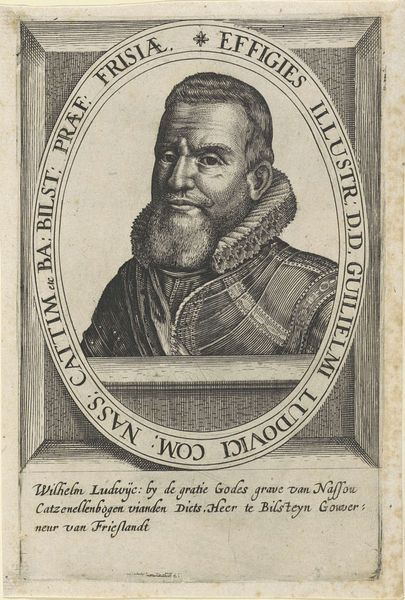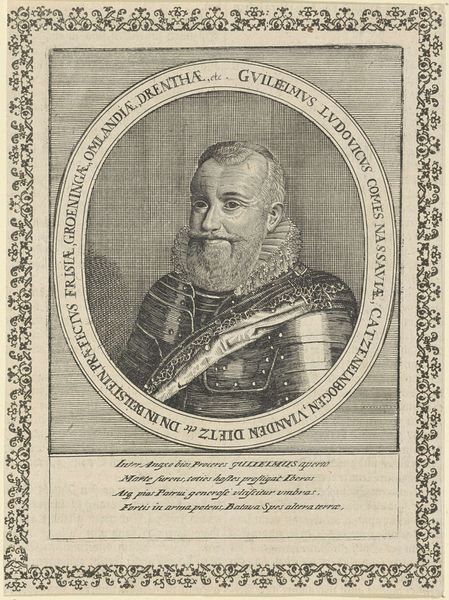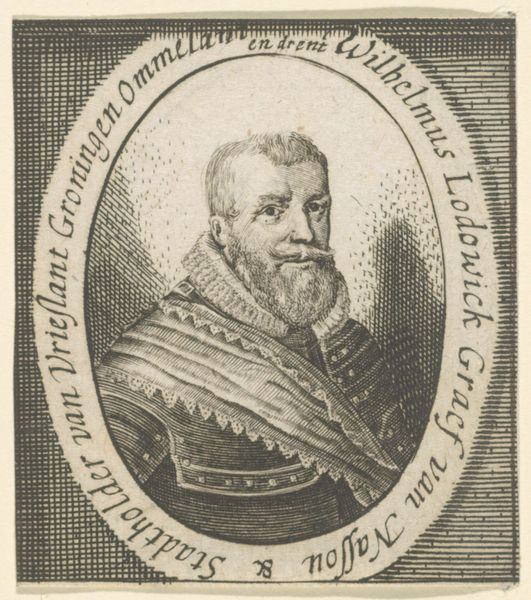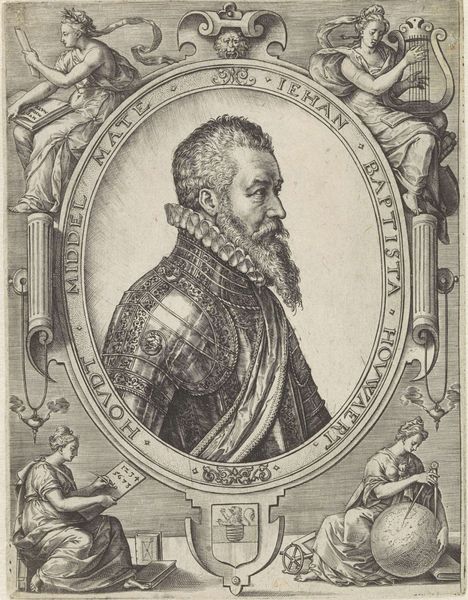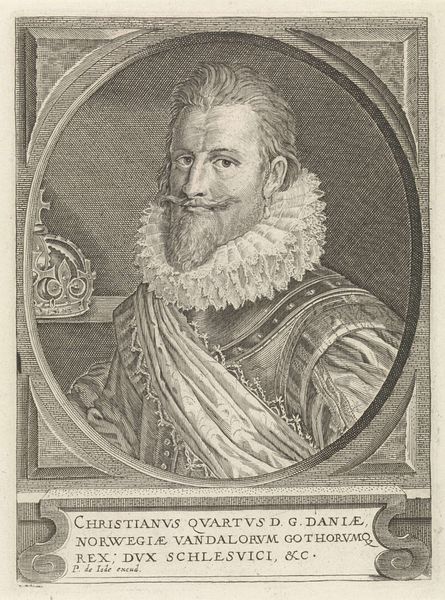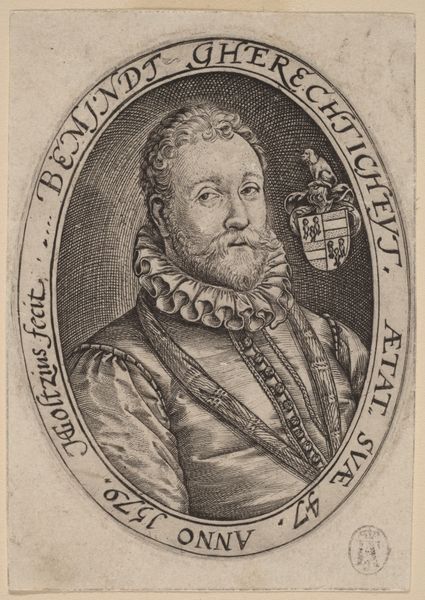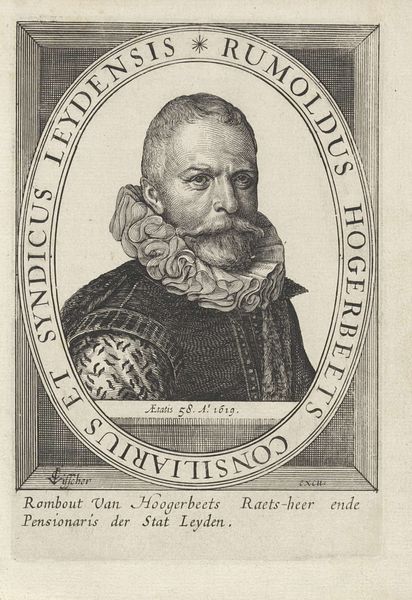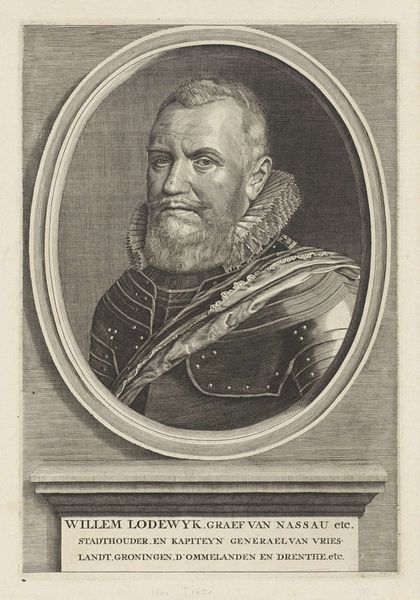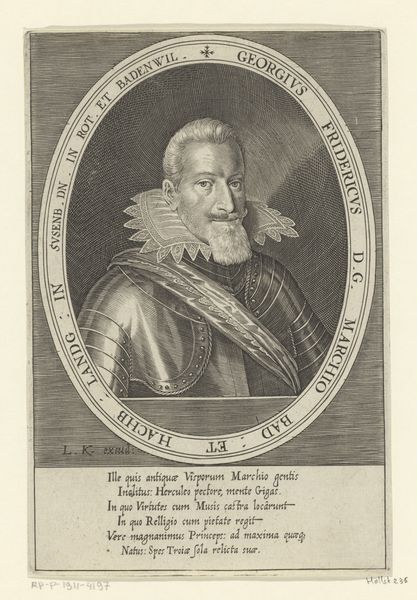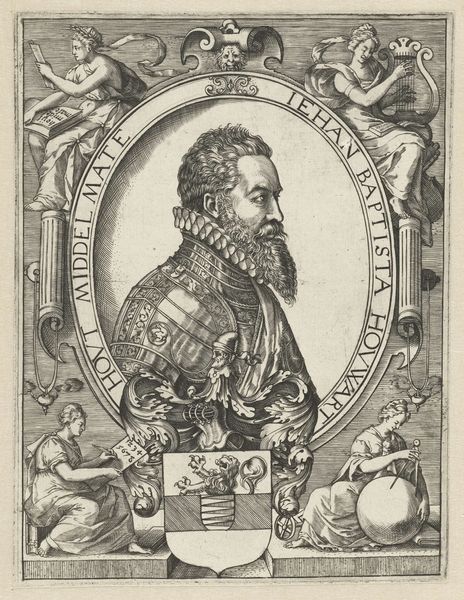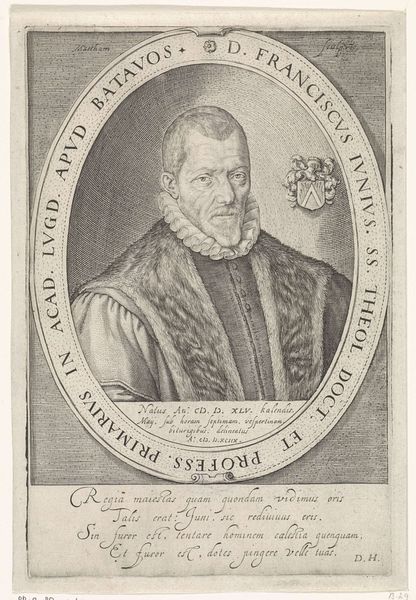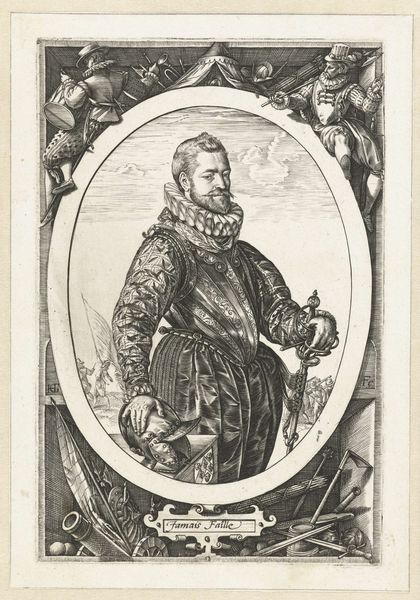
print, engraving
#
portrait
#
baroque
# print
#
old engraving style
#
history-painting
#
engraving
Dimensions: height 165 mm, width 122 mm
Copyright: Rijks Museum: Open Domain
Curator: Here at the Rijksmuseum, we have "Portret van Willem Lodewijk, graaf van Nassau-Dillenburg," dating from 1663. It's an engraving, a print, technically by an anonymous artist, though of course, not without production lineage in a workshop somewhere. What's your immediate take on it? Editor: The density of line work gives it a tangible weight, doesn't it? You can almost feel the texture of the paper and the pressure of the printing press. Curator: Indeed. I think we must situate Willem Lodewijk, or William Louis, within the complexities of Dutch history. As Count of Nassau-Dillenburg, and Stadtholder of Friesland, Groningen, and Drenthe, his significance transcends mere nobility. It’s interwoven with the Eighty Years' War and the formation of Dutch identity, particularly his leadership alongside his cousin, stadtholder Maurice of Orange. Editor: Let’s not forget how these prints circulated. Beyond commemorating the man himself, this image would have been reproduced, consumed, and traded. Each print a material object with its own social trajectory. It carries a charge through this repetition that adds to the narrative and power of Willem. Curator: Absolutely. The baroque style speaks to that period, doesn't it? It speaks to status. Editor: It also reinforces hierarchies of labour. Consider the artisan— or multiple artisans—needed to translate this man and his symbolic power through intricate hand work. The contrast feels deliberate; nobility propagated by way of common craft. Curator: Right, that tension highlights art as both a product of and a reflection on social structures. I am drawn to the gaze, the carefully sculpted beard and ruff—each detail contributing to a calculated image of authority, especially regarding leadership. This image underscores how portraiture can reinforce political ideologies. Editor: The question I can’t help asking is, who bought it? Who held and handled these objects? Whose labor was required to render it and make it real in this very medium. What of the person whose touch is forever imprinted on the plate itself, erased in name but materially fundamental to this portrayal? Curator: I think reflecting on these points enriches our perception. It prompts us to explore beyond the subject into art's multilayered connection to its historical and cultural roots. Editor: Agreed, analyzing its materiality opens a space to acknowledge the inherent power relations in both the subject and creation of this historical representation.
Comments
No comments
Be the first to comment and join the conversation on the ultimate creative platform.
